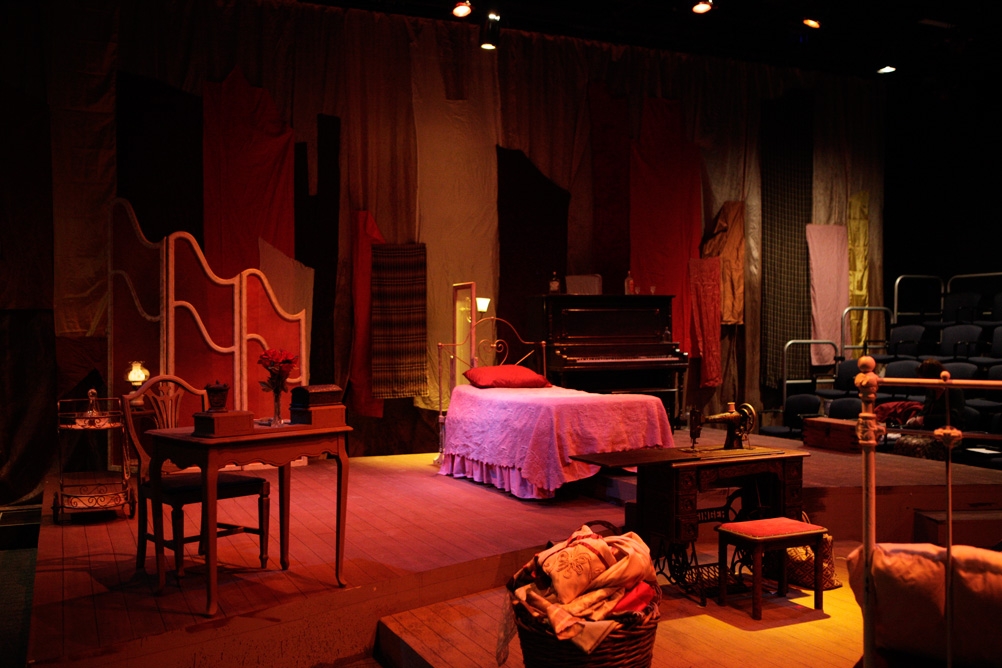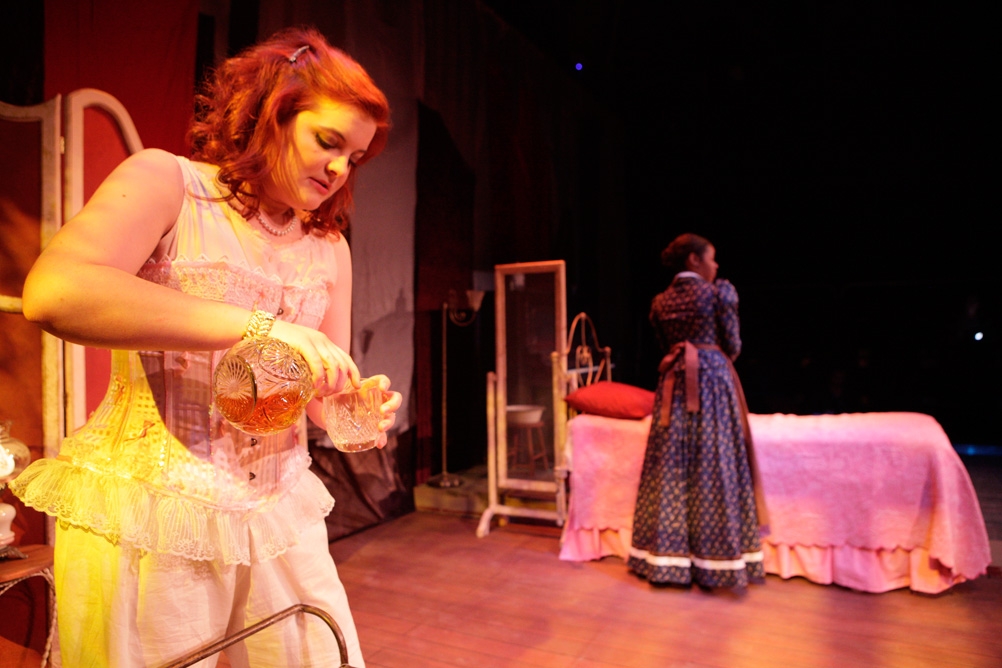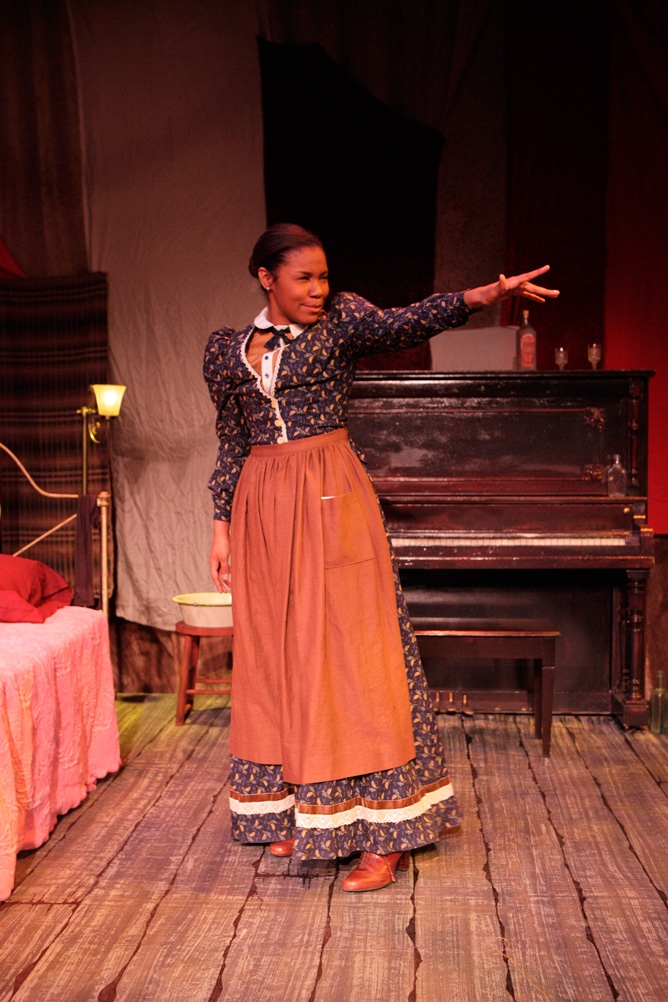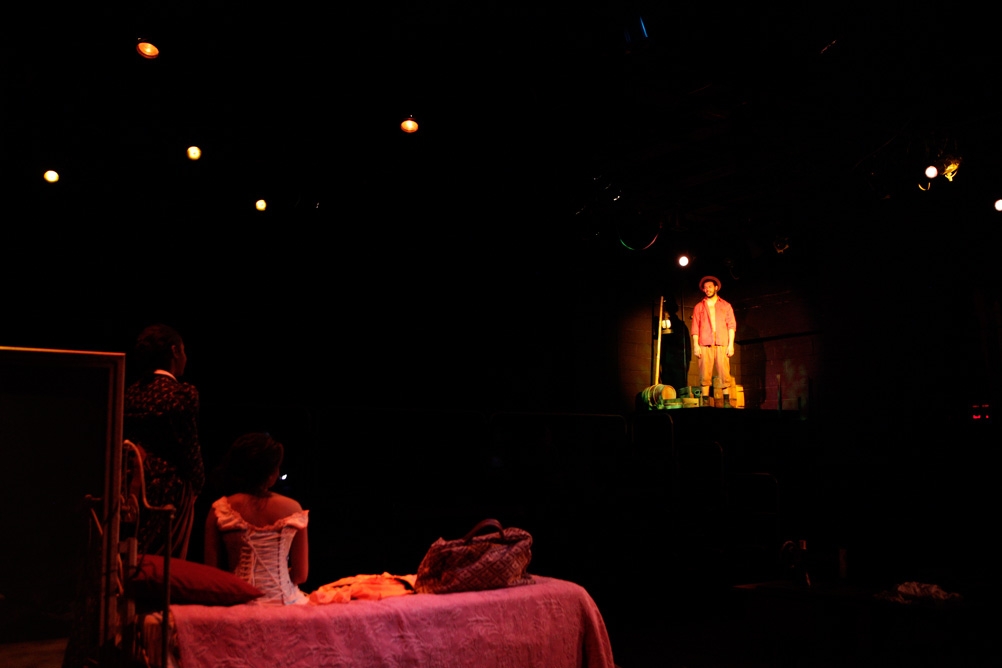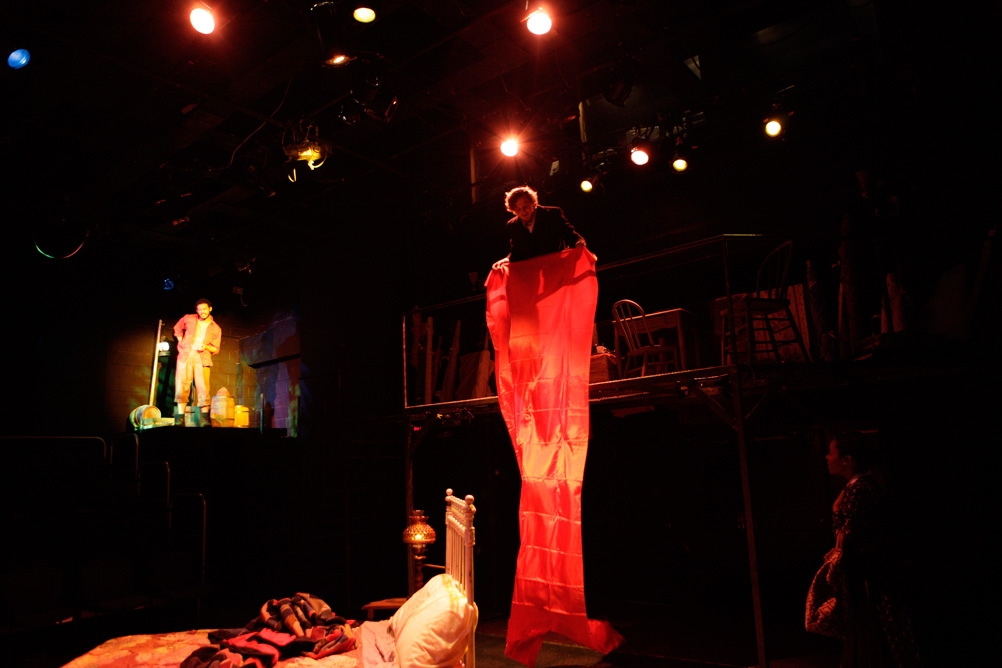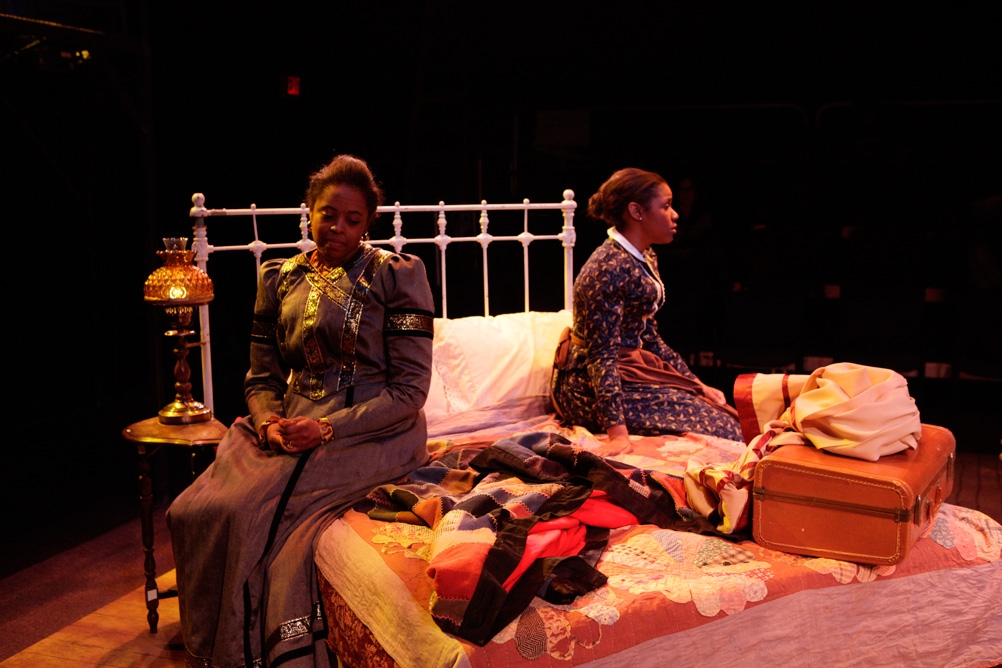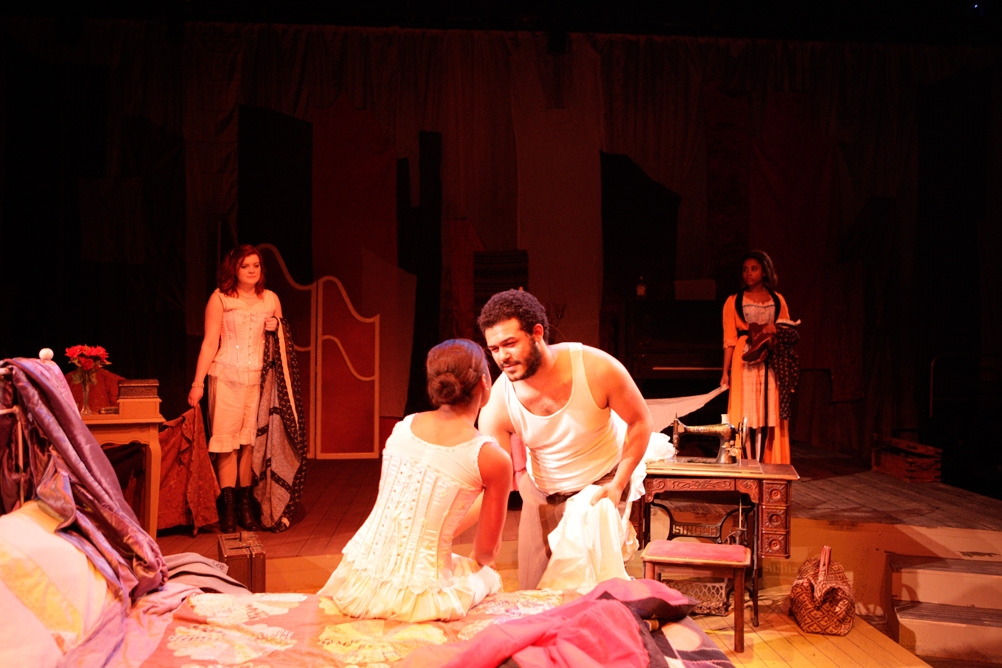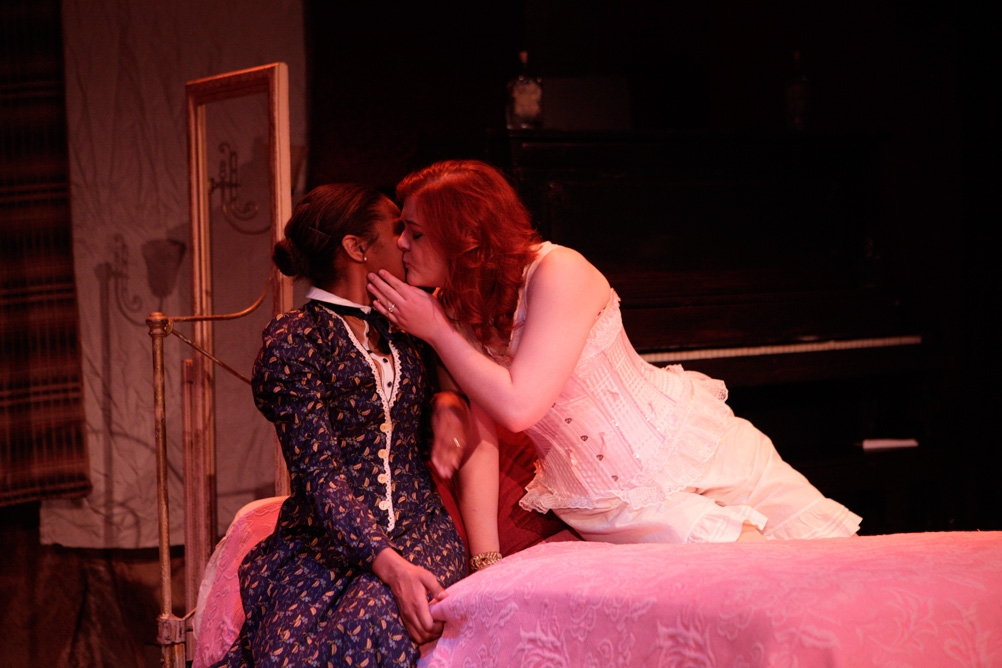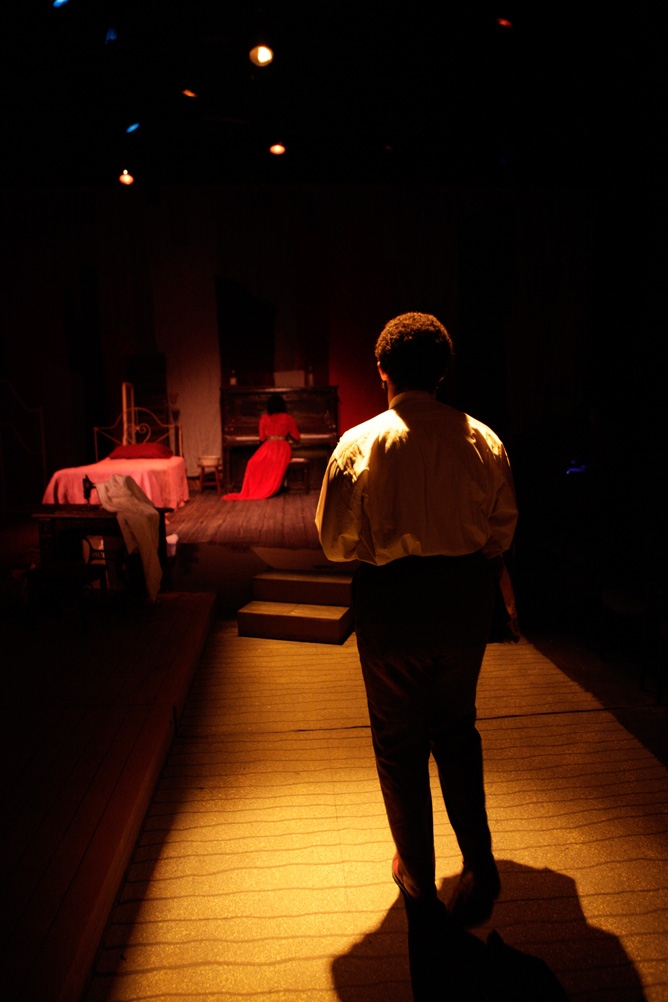| Artistic Staff | Cast |
| Director: Scott C. Knowles | Ester: Ashley Kennedy |
| Scenic Design: Rebecca Damren | Mrs. Dickson: Alysha Marie Griffin |
| Costume Design: Nanan Gu | Mrs. Van Buren: Margaret Hanzlick |
| Lighting Design: Cynthia Evans | Mr. Marks: Christoph Nevins |
| Sound Design: Scott C. Knowles | Mayme: Isabella Hampton |
| Dramaturg: Kenton Rambsy | George: Zechariah Williams |
| Stage Manager: Lauren Dowben |
Vision Statement
Intimate Apparel is a feminist play that primarily follows Esther’s story, and symbolically the story/history of African American and white women’s experience in the early 1900’s. The image of the patchwork quilt (and the way that fabric tells a story) is central to my interpretation of the play. The quilt is a hodgepodge of life, work, dreams, and catastrophes. Like the life of Esther, Mayme, and Mrs. Vanburen it is made up of a mixture of different elements that come to form through the seams, stitches, and multiple swatches a complicated and rich portrayal of the women in this play and their experiences. The patchwork quilt and the fabric in general might come to represent the interplay between various groups of people and how such interactions form and create identity and experience. Our production will rely heavily on the connection in the story between fabric and the life of Esther particularly, and the other characters more generally. Ester creates beautiful garments out of fabric, and our play will ultimately show what Ester creates from the fabric of her life, experience, love, hardship, loss, and betrayal.
Importantly, Nottage makes the corset central to her play. The corset has often been seen as a symbol for female oppression in the way that it binds, contorts, shapes, and some would argue harms the female body. Intimate Apparel uses the corset in a slightly different way. The corset is the key to Esther’s success, a tool used and manipulated by all three women to get what it is they want. It not only constricts their sexuality, but it sets it free. It is simultaneously a way for Mrs. Vanburen to rebel and the nicest thing anyone has ever made for Mayme. So, I believe, that Nottage’s play recaptures the purpose and power of the corset for the women in her play. It is not necessarily an oppression (although their might an element of that), but it is something they themselves control, use, and to a degree enjoy. The patchwork quilt and the fabric in general might come to represent the interplay between various groups of people and how such interactions form and create identity.
By using the idea of the patchwork quilt I hope to emphasize African American history generally and the story of Esther particularly. In this regard, my direction mirrors the work of Vijay Prashad’s concept of polyculturalism, which seeks to work past the notion of the multicultural to form a complicated understanding of the seams, stitches, and multiple swatches that form the experiences of any particular group. The patchwork quilt might come to represent the interplay between various groups of people and how such interactions form and create identity. The play will serve my interest in directing and my research into the polycultural nature of African American theatre.
Director’s Note
Intimate Apparel began as a recombination of an apocryphal family story about Lynn Nottage’s great-grandmother’s life as an African American seamstress in the early twentieth century and a photograph of “a beautiful white wedding corset embossed with orange blossoms.”[i] It is a history play that necessarily and importantly does not recount history, but rather creates the past. The play’s characters are made up of those forgotten by traditional history, those whose stories are scarcely told, those whose identities are maligned by sociocultural stereotypes and prejudices. Nottage gives the nascent women’s movement, the migrant worker, and—perhaps most powerfully—the African American woman of the early twentieth century a complex telling that breathes life into their history.
But how do we create history on stage? Suzan-Lori Parks structures her plays and their language through a concept she calls “Rep and Rev” (Repetition and Revision): “A concept integral to the Jazz esthetic in which the composer or performer will write or play once and again and again; etc.—with each revisit the phrase is slightly revised.”[ii] Intimate Apparel, whose structure and language are not overtly infiltrated by “Rep and Rev,” more explicitly repeats and revises historical artifacts, such as stereotypical caricatures seen throughout the periods entertainment (e.g. the prostitute with a heart of gold, and the mammy) and the role and effect of the corset. For example, Intimate Apparel reclaims the corset as a means to independence by revising its place in history through Esther Mills. The corset becomes a tool for women and a symbol of their strength, instead of being seen as a cage or highly negative manipulation of the female form. Through the play Nottage “Rep and Rev’s” history.
“Rep and Rev” does not, however, end with the work of
Nottage. The entire process of creating theatre can easily be viewed as
repetition with revision. For the last
few months the entire cast and production team have tirelessly rehearsed,
revised, and rehearsed again. With each iteration we have added our own
revisions to Nottage’s play and the play, in turn, has revised our thoughts,
self-conceptions, and worldviews. This is the purpose of theatre and I invite
you to join us in continuing this dual process/purpose of “Rep and Rev.”
[i] “Intimate Conversation: An Interview with Lynn Nottage.” Interview by Steve Lickteig. Centerstage.org. Center Stage Maryland.
[ii] Suzan-Lori Parks, “Elements of Style,” The America Play and Other Works (New York: Theatre Communications Group, 1995) 8-9.
